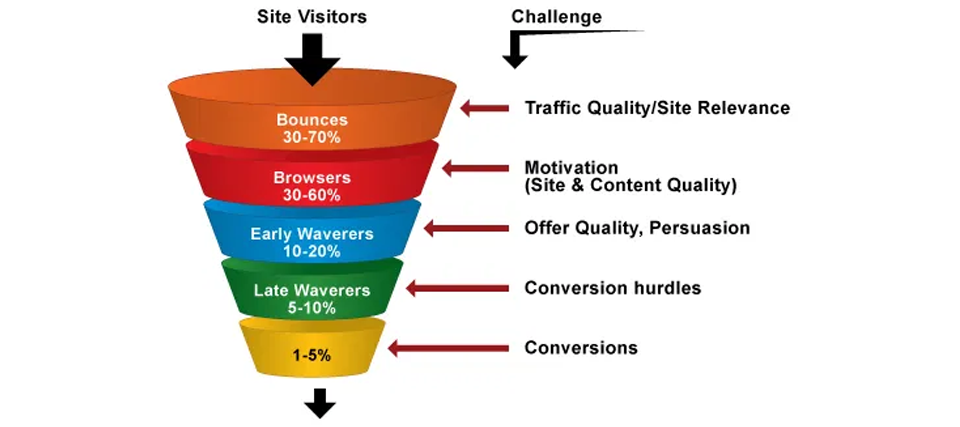 By Sean Nolan, Senior Strategic Account Analyst
By Sean Nolan, Senior Strategic Account Analyst
If you drive traffic directly to Amazon from an external source, but don’t vet it first, you may do more harm than good if ranking is your goal.
Amazon rewards conversion above all else. Conversions = Orders / Unique Page Views
Conversion, Product Ranking and External Impressions when working in unison can lead to quick ranking growth, but if done incorrectly it may do more harm than good.
Let’s say you are selling walnuts and are looking to increase your listings ranking for the keyword “walnut”.
A great way to start is to simply spend more on Amazon ads, coupled with driving external traffic using a keyword targeted link (akak “SuperURL”) – or a search-find-buy (SFB) method – to increase ranking to your listing. For those of you who aren’t familiar, a SuperURL can be created with tools such as
PixelfyMe and essentially mimic the natural process a customer takes to search a keyword, find your product, and purchase it. However, some experts believe that these URL’s are weakening in effectiveness, and thus the SFB method can be used instead.
The problem arises when the additional traffic you are driving does not convert at the same rate as the listings that are ranking higher than you for the specific keyword you are targeting, such as “walnuts”.
In terms of Amazon’s A9 algorithm, the idea that “more eyeballs equal more sales” isn’t always the case.
Driving tons of traffic externally that is not converting well can lead Amazon to dissociate your product with that keyword and cause more pain than gain.
It is key to vet or verify the traffic you are driving thoroughly in order to avoid this problem.
When gauging – or trying to motivate – the customer’s willingness to purchase, there are a few proven strategies:
- Start by targeting your most loyal customers through repeat customer email lists that will allow you to confidently drive traffic to products that customers are likely to purchase.
- Landing pages are a great way to vet who is interested and who is just browsing. Also, if you can, try to verify if the prospective customer is a Prime member because they are 4-5 times more likely to purchase than non-prime members. It’s also important to remember to assess whether they some type of positive action; for example, whether they take the time to watch a video related to your brand/product, or whether they input their email because they’re interested in more information.
- Discount codes can either be used with the 2 strategies discussed above or they can be used alone to vet which prospective customers are most ready-to-buy. And they can be used for new audiences, as well as to retarget potential customers that proceeded to the landing page but did not engage at a satisfactory level.
To summarize, driving external traffic with the purpose of ranking higher and receiving higher sales isn’t always that simple. Conversion plays a key role, so make sure to monitor the conversion rate closely and adjust your external sales funnel targeting as needed. Because at the end of the day, that can ultimately make the difference between being at the top of the search ranking vs. being at the bottom.
 By Sean Nolan, Senior Strategic Account Analyst
If you drive traffic directly to Amazon from an external source, but don’t vet it first, you may do more harm than good if ranking is your goal.
Amazon rewards conversion above all else. Conversions = Orders / Unique Page Views
Conversion, Product Ranking and External Impressions when working in unison can lead to quick ranking growth, but if done incorrectly it may do more harm than good.
Let’s say you are selling walnuts and are looking to increase your listings ranking for the keyword “walnut”.
A great way to start is to simply spend more on Amazon ads, coupled with driving external traffic using a keyword targeted link (akak “SuperURL”) – or a search-find-buy (SFB) method – to increase ranking to your listing. For those of you who aren’t familiar, a SuperURL can be created with tools such as PixelfyMe and essentially mimic the natural process a customer takes to search a keyword, find your product, and purchase it. However, some experts believe that these URL’s are weakening in effectiveness, and thus the SFB method can be used instead.
The problem arises when the additional traffic you are driving does not convert at the same rate as the listings that are ranking higher than you for the specific keyword you are targeting, such as “walnuts”.
In terms of Amazon’s A9 algorithm, the idea that “more eyeballs equal more sales” isn’t always the case.
Driving tons of traffic externally that is not converting well can lead Amazon to dissociate your product with that keyword and cause more pain than gain.
It is key to vet or verify the traffic you are driving thoroughly in order to avoid this problem.
When gauging – or trying to motivate – the customer’s willingness to purchase, there are a few proven strategies:
By Sean Nolan, Senior Strategic Account Analyst
If you drive traffic directly to Amazon from an external source, but don’t vet it first, you may do more harm than good if ranking is your goal.
Amazon rewards conversion above all else. Conversions = Orders / Unique Page Views
Conversion, Product Ranking and External Impressions when working in unison can lead to quick ranking growth, but if done incorrectly it may do more harm than good.
Let’s say you are selling walnuts and are looking to increase your listings ranking for the keyword “walnut”.
A great way to start is to simply spend more on Amazon ads, coupled with driving external traffic using a keyword targeted link (akak “SuperURL”) – or a search-find-buy (SFB) method – to increase ranking to your listing. For those of you who aren’t familiar, a SuperURL can be created with tools such as PixelfyMe and essentially mimic the natural process a customer takes to search a keyword, find your product, and purchase it. However, some experts believe that these URL’s are weakening in effectiveness, and thus the SFB method can be used instead.
The problem arises when the additional traffic you are driving does not convert at the same rate as the listings that are ranking higher than you for the specific keyword you are targeting, such as “walnuts”.
In terms of Amazon’s A9 algorithm, the idea that “more eyeballs equal more sales” isn’t always the case.
Driving tons of traffic externally that is not converting well can lead Amazon to dissociate your product with that keyword and cause more pain than gain.
It is key to vet or verify the traffic you are driving thoroughly in order to avoid this problem.
When gauging – or trying to motivate – the customer’s willingness to purchase, there are a few proven strategies:











No Comments